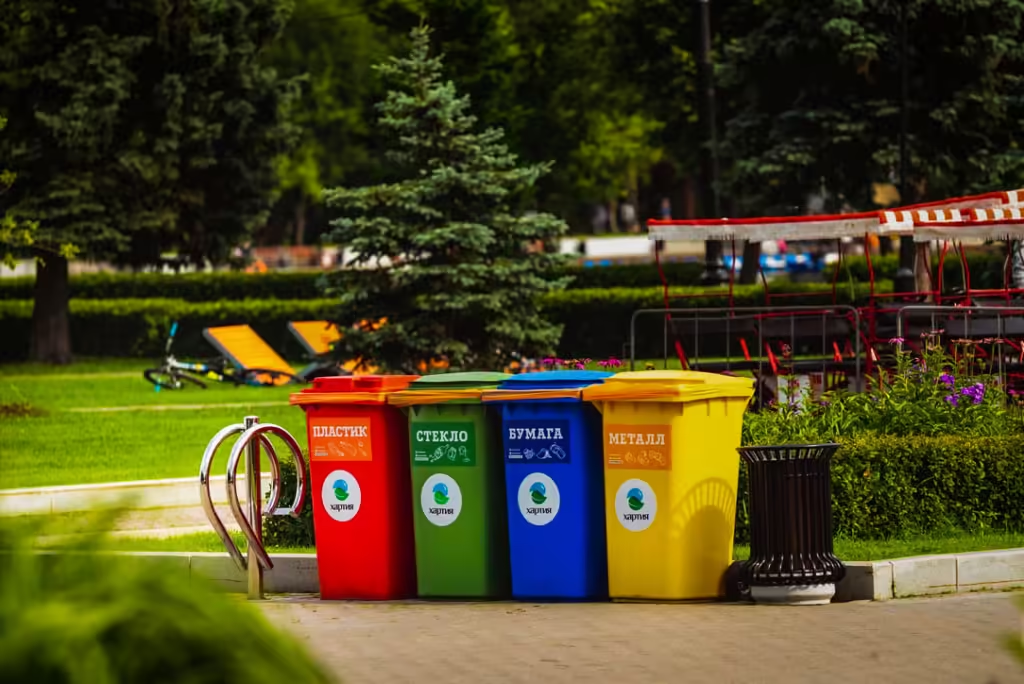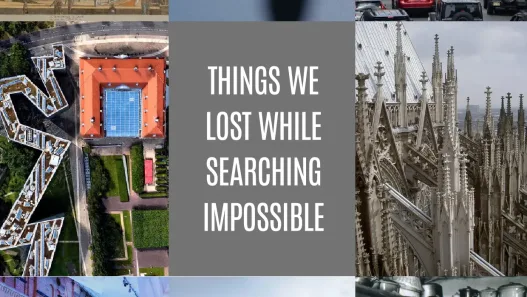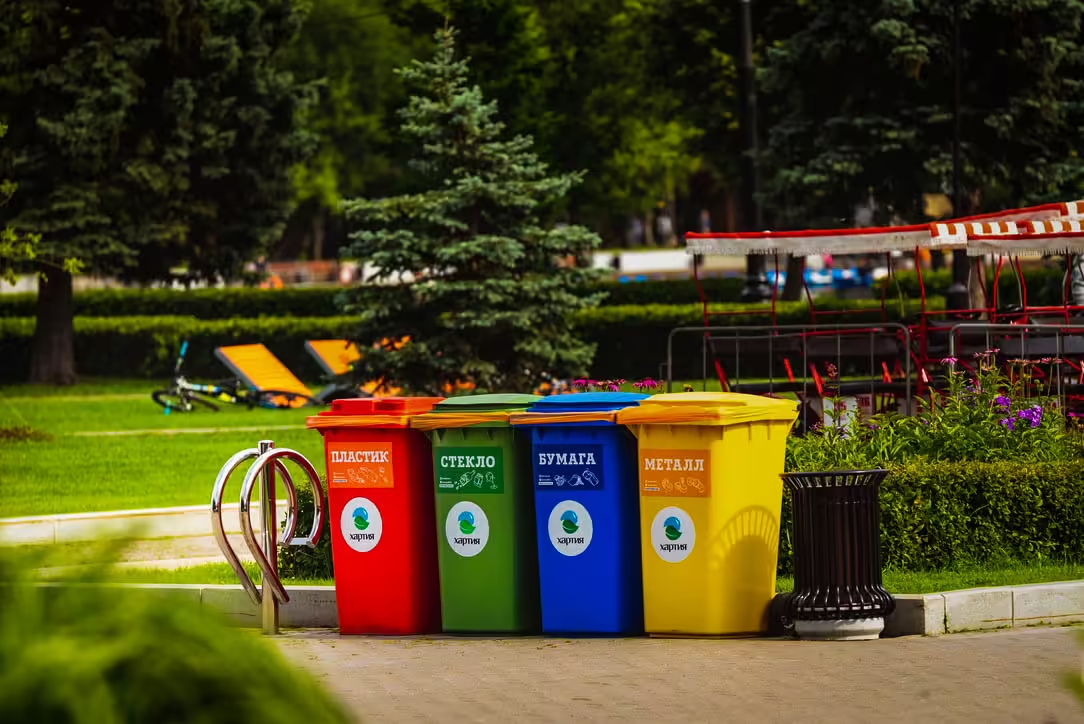Sustainable waste management is a crucial aspect of modern urban planning and environmental management. As cities grow and populations increase, the amount of waste generated poses significant challenges. Sustainable waste management focuses on reducing the environmental impact of waste through innovative strategies, recycling efforts, and community engagement. This approach not only addresses the pressing issues of waste disposal, but also fosters a culture of sustainability that can lead to healthier urban environments.

Definition of Sustainable Waste Management
At its core, sustainable waste management refers to the systematic approach to managing waste that minimizes its impact on the environment while promoting social and economic well-being. This includes methods such as reducing waste generation, reusing materials, recycling, and safely disposing of non-recyclable waste. The goal is to create a closed-loop system where resources are continually repurposed, thereby reducing the need for landfill space and minimizing pollution. This holistic perspective encourages responsible consumption and a shift towards more sustainable lifestyles.
Importance in Urban Planning
In the context of urban planning, sustainable waste management plays a vital role in creating livable cities. As urban areas expand, the pressures on waste management systems grow. Efficient waste management can lead to cleaner streets, reduced greenhouse gas emissions, and lower health risks associated with waste. By integrating sustainable practices into urban planning, cities can enhance their resilience against climate change, improve public health, and foster community involvement. For example, cities that implement comprehensive recycling programs not only reduce landfill waste but also create jobs and stimulate local economies.
Historical Context
The concept of waste management has evolved significantly over the years. In the past, waste was often simply discarded in open dumps or burned, leading to severe environmental and health impacts. As awareness of these issues grew, so did the understanding of waste as a resource rather than just refuse. The 20th century saw the introduction of organized waste collection and recycling initiatives, driven by environmental movements and legislation. Notably, the 1970s marked a turning point with the establishment of Earth Day and the rise of the environmental protection movement, which emphasized the need for sustainable practices.
Current Trends
Today, sustainable waste management is increasingly influenced by technological advancements and innovative practices. Smart waste management systems utilize sensors and data analytics to optimize collection routes and reduce operational costs. Communities are also embracing zero-waste initiatives, aiming to divert as much waste as possible from landfills through recycling, composting, and community sharing programs. Additionally, there is a growing trend towards circular economy principles, where products are designed for longevity and reuse, further reducing waste generation.
Key Challenges
Despite its importance, sustainable waste management faces several challenges. One significant issue is public awareness and engagement; many individuals may not understand the benefits of recycling or the impact of waste on the environment. Moreover, infrastructure limitations can hinder effective waste management, particularly in developing regions where resources are scarce. Policy and regulatory frameworks also play a critical role; inconsistent regulations can create confusion and inefficiency. Addressing these challenges requires collaboration among governments, businesses, and communities to develop comprehensive strategies that promote sustainable waste management practices.
In conclusion, sustainable waste management is a multifaceted issue that intertwines with urban planning, environmental health, and community well-being. By understanding its definition, historical context, and current trends, as well as addressing its challenges, we can create more sustainable urban environments that benefit everyone.
Principles of Sustainable Waste Management
Sustainable waste management is a crucial aspect of environmental stewardship, focusing on minimizing waste generation and maximizing resource recovery. As our world faces increasing challenges related to pollution and resource depletion, the principles of sustainable waste management have become vital. This approach not only benefits the environment but also fosters social and economic well-being. By understanding and applying these principles, we can work towards a more sustainable future.
Reduce, Reuse, Recycle
At the heart of sustainable waste management lies the mantra “Reduce, Reuse, Recycle.” This triad encapsulates a strategy that emphasizes minimizing waste through conscientious habits. The first principle, reduction, encourages individuals and organizations to decrease the amount of waste they produce. This can be achieved through mindful consumption—choosing products with less packaging, opting for digital over paper, and prioritizing quality items that last longer.
Reusing involves finding new ways to use items rather than discarding them. For example, glass jars can be transformed into storage containers, and old clothing can be repurposed into cleaning rags. This not only extends the life of products but also reduces the demand for new resources.
Recycling completes this cycle by processing used materials into new products. Communities worldwide have implemented robust recycling programs that accept a variety of materials, from plastics to metals. The success of these programs depends on public participation and awareness of what can be recycled. Engaging in these practices fosters a culture of sustainability and encourages individuals to take responsibility for their waste.
Circular Economy Concepts
The circular economy concept reimagines traditional economic models by prioritizing sustainability and resource efficiency. Unlike the linear economy, which follows a “take-make-dispose” pattern, the circular economy focuses on keeping resources in use for as long as possible. This approach not only minimizes waste but also maximizes the value derived from materials.
In a circular economy, products are designed for longevity, repairability, and recyclability. Companies are encouraged to adopt practices that extend the lifecycle of their products, such as offering repair services or creating modular designs that allow for easy upgrades. This shift benefits consumers, who enjoy durable products, as well as the environment, which sees reduced resource extraction and waste.
Real-world examples of circular economy practices abound. For instance, companies like IKEA are increasingly using recycled materials in their products and implementing take-back schemes, where customers can return old items for recycling or refurbishment. By embracing circular economy principles, businesses can contribute to a more sustainable future while also enhancing their economic resilience.
Pollution Prevention Strategies
Pollution prevention strategies are essential components of sustainable waste management. These strategies aim to reduce or eliminate waste and emissions at the source, rather than managing them after they have been created. By focusing on prevention, we can significantly lessen the environmental impact of industrial processes and everyday activities.
One effective approach is the adoption of cleaner production techniques. This involves modifying production processes to reduce waste generation and energy consumption. For example, manufacturers can switch to non-toxic materials, implement energy-efficient technologies, and optimize resource use. Such changes not only lower pollution levels but can also result in cost savings for businesses.
Another key aspect of pollution prevention is community involvement. Local governments and organizations can work together to promote practices that reduce waste and pollution, such as community clean-up events and educational campaigns. By fostering a culture of responsibility and awareness, communities can collectively contribute to a cleaner environment.
Community Engagement and Education
Community engagement and education are vital for successful sustainable waste management. Raising awareness about waste issues and encouraging active participation can lead to significant behavioral changes. Education initiatives can take many forms, from school programs that teach children about recycling to workshops for adults on composting and waste reduction.
Engaging the community fosters a sense of ownership and responsibility towards local waste management efforts. When people understand the impact of their actions, they are more likely to adopt sustainable practices. For example, communities that host recycling drives or clean-up events often see increased participation and commitment to reducing waste.
Social media and local campaigns can also play a crucial role in spreading awareness and sharing success stories. By showcasing the benefits of sustainable practices—like cleaner neighborhoods and healthier ecosystems—communities can inspire others to join the movement. Ultimately, informed and engaged citizens are the backbone of effective waste management strategies.
Technological Innovations
Technological innovations are transforming the landscape of sustainable waste management, offering new solutions to age-old problems. From advanced recycling technologies to waste-to-energy systems, these innovations are making it easier to manage waste more sustainably.
One promising area is the development of smart waste management systems. These systems use sensors and data analytics to optimize waste collection and processing. For example, sensors in trash bins can monitor fill levels, allowing waste collection services to operate more efficiently and reduce unnecessary trips. This not only saves money but also lowers emissions from collection vehicles.
Another exciting innovation is the rise of biodegradable materials. Researchers are developing alternatives to traditional plastics that break down more easily and do not contribute to long-lasting pollution. These materials can significantly reduce landfill waste and environmental harm.
Moreover, the integration of artificial intelligence in sorting facilities enhances recycling efficiency. AI systems can quickly identify and separate recyclable materials from waste streams, improving recovery rates. By leveraging technology, we can create a more efficient and sustainable waste management system that benefits both the environment and society.
In conclusion, the principles of sustainable waste management are essential for creating a healthier planet. By embracing reduction, reuse, and recycling, fostering a circular economy, implementing pollution prevention strategies, engaging communities, and utilizing technological innovations, we can build a sustainable future for generations to come.
Integration of Waste Management in Urban Design
Urban design plays a crucial role in shaping the cities we live in, impacting everything from aesthetics to functionality. One of the most vital aspects of urban design is waste management. As cities grow, so does the amount of waste they produce. Effective waste management integrated into urban design can lead to cleaner, more sustainable environments. This integration encompasses various elements, including zoning regulations, infrastructure planning, the design of public spaces, innovative smart solutions, and the collaboration of different stakeholders.
Zoning Regulations
Zoning regulations are foundational to effective urban planning and play a significant role in waste management. These regulations dictate how land can be used, influencing the placement of residential, commercial, and industrial areas. By thoughtfully designing zones, cities can minimize the distance waste must travel to disposal sites or recycling centers. For instance, creating mixed-use zones allows for residential areas to coexist with businesses, reducing the need for long-distance waste transportation.
Moreover, zoning can enforce the inclusion of waste management facilities within certain areas. By ensuring that waste processing centers, recycling facilities, and composting sites are strategically located, cities can streamline waste collection and processing. This not only enhances efficiency but also promotes community awareness and participation in sustainable practices.
Infrastructure Planning
Infrastructure planning is essential for supporting effective waste management systems. It involves designing roads, pathways, and collection points that facilitate smooth waste collection and disposal. For example, cities need to consider the placement of waste bins and collection points, ensuring they are accessible and adequately serviced.
Additionally, infrastructure must support recycling and composting initiatives. Dedicated lanes for collection trucks, well-designed transfer stations, and integrated waste sorting facilities can significantly enhance the efficiency of waste processing. Cities like San Francisco have implemented comprehensive waste management infrastructure that promotes recycling and composting, achieving impressive diversion rates from landfills.
Public Spaces and Waste Management
Public spaces, such as parks and plazas, are vital components of urban design that can significantly influence waste management practices. Thoughtful design of these areas can encourage responsible waste disposal and promote community engagement. For instance, strategically placed recycling bins next to regular trash cans can encourage residents and visitors to sort their waste properly.
Moreover, educational signage in these areas can inform the public about proper disposal practices and the importance of waste reduction. Engaging public spaces can host community events focused on sustainability, fostering a sense of responsibility and ownership among residents. Cities like Melbourne have successfully integrated waste management into their public spaces, using art installations and community-driven projects to raise awareness about waste issues.
Smart Waste Management Solutions
The advent of technology has ushered in innovative smart waste management solutions that can transform urban waste handling. Smart bins equipped with sensors can monitor waste levels and alert collection services when they are full, optimizing collection routes and reducing operational costs.
Cities are also utilizing data analytics to track waste generation patterns, allowing for more effective planning and resource allocation. For example, Singapore has implemented a smart waste management system that uses real-time data to enhance efficiency and reduce environmental impact. These technological advancements not only improve operational efficiency but also engage the public by providing transparent data on waste management efforts.
Stakeholder Collaboration
Effective waste management in urban design cannot happen in isolation; it requires collaboration among various stakeholders, including government agencies, businesses, and community members. By fostering partnerships, cities can ensure that waste management strategies are comprehensive and inclusive.
For instance, local governments can work with businesses to develop waste reduction programs that align with sustainability goals. Community organizations can play a pivotal role in educating residents about proper waste disposal and recycling practices. Successful examples, such as the Zero Waste initiative in Kamikatsu, Japan, showcase how collaborative efforts can lead to remarkable waste reduction achievements.
In conclusion, the integration of waste management in urban design is not just a logistical necessity but a vital aspect of creating sustainable and livable cities. By considering zoning regulations, infrastructure planning, the design of public spaces, smart solutions, and stakeholder collaboration, urban designers can create environments that not only manage waste effectively but also inspire communities to engage in sustainable practices. As cities continue to evolve, the commitment to integrating waste management into their design will play a crucial role in shaping a healthier planet for future generations.
Future Trends in Sustainable Waste Management
As the world grapples with increasing waste production and dwindling resources, sustainable waste management emerges as a crucial focus for communities and governments alike. This involves not just reducing the amount of waste we generate, but also rethinking how we manage it through innovative solutions. By exploring future trends in sustainable waste management, we can better understand how emerging technologies, policy developments, artificial intelligence, global best practices, and visionary goals can shape a cleaner, more sustainable future.
Emerging Technologies
Emerging technologies are revolutionizing waste management by making processes more efficient and less harmful to the environment. One notable innovation is waste-to-energy systems, which convert waste materials into usable energy, significantly reducing landfill dependency. For instance, anaerobic digestion breaks down organic waste, producing biogas that can power homes and businesses.
Additionally, advanced sorting technologies, like artificial intelligence-enabled robotic arms, are improving recycling rates by accurately identifying and separating materials. These robots can work tirelessly to sort through mixed waste streams much faster than humans, ensuring that recyclable materials are diverted from landfills.
Another exciting development is the use of biodegradable materials and innovative packaging solutions. Companies are increasingly adopting bioplastics and other sustainable materials that break down more easily in the environment, reducing the long-term impact of plastic waste.
As these technologies evolve, they hold the potential to transform waste management from a reactive approach into a proactive system that minimizes waste generation at its source.
Policy Developments
Policy plays a pivotal role in shaping sustainable waste management practices. Governments worldwide are increasingly enacting regulations that promote waste reduction and recycling. Extended Producer Responsibility (EPR) is one such policy where manufacturers are held accountable for the entire lifecycle of their products, encouraging them to design for recyclability and reduce waste.
Moreover, many countries are implementing landfill bans on certain materials, such as plastics and organic waste, pushing businesses to seek alternative disposal methods. For example, in countries like Sweden, where landfilling has dropped significantly, policies incentivize recycling and composting, fostering a culture of sustainability.
International agreements, like the Paris Agreement, also reflect a growing recognition of the need for sustainable practices in waste management as part of broader environmental goals. These policies not only create frameworks for responsible waste management but also educate the public and businesses about the importance of sustainability.
Role of Artificial Intelligence
Artificial intelligence is reshaping waste management by providing tools that enhance efficiency and decision-making. AI algorithms analyze vast amounts of data to predict waste generation trends, helping municipalities plan more effectively for collection and processing.
In recycling facilities, AI-driven systems can identify and sort materials with remarkable accuracy, reducing contamination rates that often hinder recycling efforts. Machine learning models can also optimize routes for waste collection trucks, minimizing fuel consumption and emissions.
Furthermore, AI is instrumental in community engagement, using apps to inform residents about proper recycling practices and schedules. By leveraging data, AI can tailor educational efforts to specific communities, ensuring that the message resonates and leads to behavioral changes.
The integration of AI into waste management not only streamlines operations but also fosters a culture of informed decision-making that prioritizes sustainability.
Global Best Practices
Around the world, various regions exemplify best practices in sustainable waste management. For instance, Japan is renowned for its extensive recycling programs and waste separation policies, which emphasize community involvement. Citizens are educated on how to sort their waste meticulously, resulting in some of the highest recycling rates globally.
Another example is the city of San Francisco, which has implemented a zero-waste goal, aiming to divert 100% of its waste from landfills by 2030. This ambitious plan includes robust recycling and composting initiatives, alongside community outreach efforts that engage residents in sustainability practices.
These examples highlight the importance of collaboration between governments, businesses, and communities. By sharing knowledge and strategies, cities worldwide can learn from each other and implement effective waste management practices tailored to their unique needs.
Vision for Looking
Ahead to 2050, the vision for sustainable waste management is both ambitious and hopeful. The goal is to create a circular economy where waste is not merely discarded, but re-entered into the production cycle as a resource. This shift will require a fundamental change in how we perceive waste, moving from a linear model of take-make-dispose to one that emphasizes reuse, recycling, and regeneration.
In this future, advanced technologies will be commonplace, making waste management seamless and integrated into daily life. Smart cities will utilize interconnected systems to monitor waste generation in real-time, allowing for adaptive strategies that respond to changing patterns.
Moreover, public awareness and engagement will be at an all-time high, with individuals actively participating in sustainability initiatives and understanding their role in the waste management ecosystem.
Ultimately, the vision for is a world where waste is minimized, resources are conserved, and environmental health is prioritized, paving the way for a sustainable future that benefits all.
Conclusion
Summary of Key Points
In our exploration of modern architecture, we have uncovered the fundamental principles that shape our built environment. From the significance of sustainability to the integration of technology, it is clear that architecture extends beyond mere aesthetics. We’ve examined how thoughtful design can enhance community interaction and well-being, emphasizing that buildings are not just structures but vital components of the social fabric. The relationship between architecture and the environment has also been highlighted, showcasing how eco-friendly practices can lead to a healthier planet. Ultimately, the discussions have underscored the importance of collaboration among architects, urban planners, and the community to create spaces that are not only functional but also enriching for those who inhabit them.
Importance of Community Involvement
Community involvement is a cornerstone of successful architectural projects. When the people who will use a space are actively engaged in its design, the outcome is often more relevant and beneficial. This collaborative approach fosters a sense of ownership among residents, leading to enhanced pride in their surroundings. For example, community-led initiatives in urban neighborhoods have resulted in parks and public spaces that reflect the culture and needs of the inhabitants. By listening to the voices of the community, architects can design environments that promote social interaction, accessibility, and inclusivity. This active participation not only strengthens the bonds within a community but also ensures that the architecture serves its intended purpose effectively.
Future Directions for Research
Looking ahead, the future of architectural research is promising and multifaceted. There is a growing need to explore the intersection of technology and design, particularly in areas like smart cities and building automation. Research will increasingly focus on how data can inform architectural decisions, creating spaces that respond dynamically to the needs of their users. Additionally, the impact of climate change on architectural practices will drive innovation in sustainable materials and construction techniques. The exploration of biophilic design—where nature is integrated into the built environment—promises to enhance mental health and well-being. As we delve into these areas, collaboration between disciplines will be essential to address complex challenges and promote holistic solutions.
Advocacy for Sustainable Practices
Advocating for sustainable architectural practices is vital in our quest for a healthier planet. This advocacy goes beyond just using eco-friendly materials; it involves a fundamental shift in how we think about design and its impact on the environment. Architects are now called to consider the life cycle of their buildings, from the sourcing of materials to energy use and waste management. Real-world examples, such as the Bullitt Center in Seattle, demonstrate how sustainable design can lead to net-zero energy buildings that produce as much energy as they consume. By championing these practices, we can inspire a new generation of architects and builders to prioritize sustainability in their work, ensuring that future developments harmonize with the natural world rather than disrupt it.
Final Thoughts
As we conclude our journey through the realm of architecture, it is clear that the built environment plays a crucial role in shaping our experiences and interactions. The convergence of community involvement, technological advancement, and sustainability will define the future of architectural practices. Each of us has a role to play, whether as a professional in the field, a community member, or an advocate for change. The call to action is simple: engage with your surroundings, voice your ideas, and support initiatives that prioritize thoughtful design. Together, we can create spaces that not only meet our needs but also inspire and uplift us, forging a path toward a more sustainable and inclusive future.
























